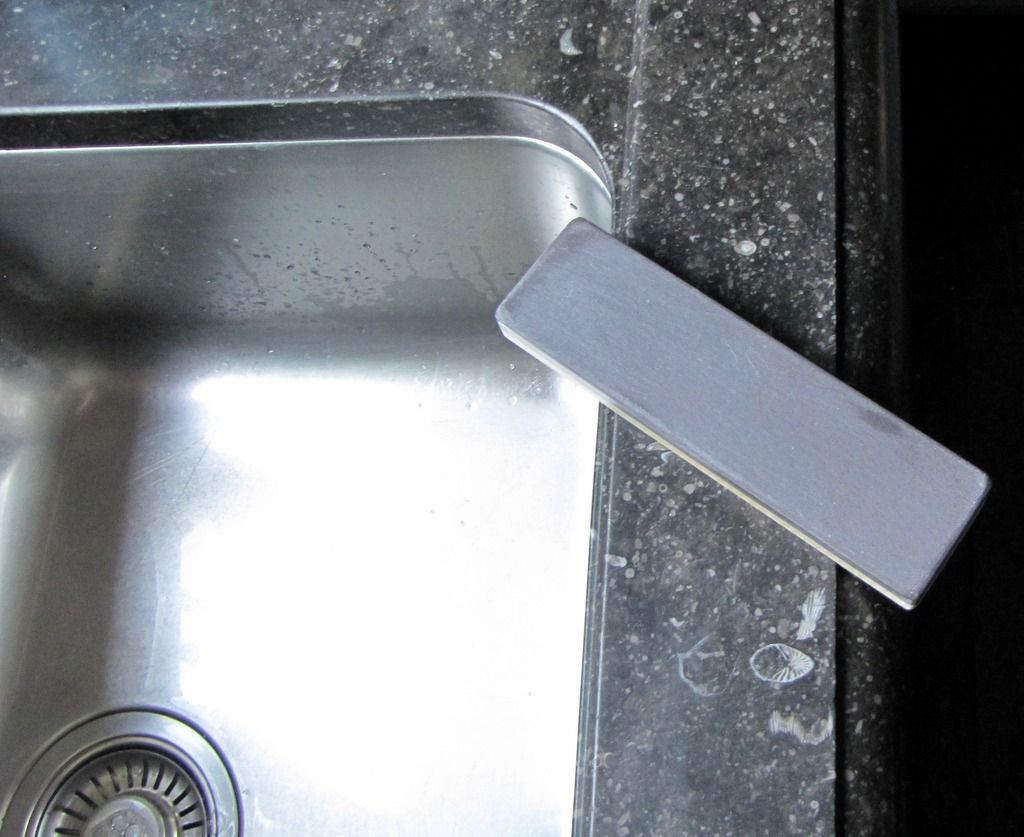Results 11 to 17 of 17
-
10-21-2016, 07:35 PM #11

The stone could be a Lorraine/ Rouge du Salm, but it looks more like a Belgian blue.
Also, the stone appears to be a bit thin. Could it be simply the backing from a coticule combo... with no coticule left on it?
I have two pieces about the same size, the one is a Belgian blue (really soft, you can scratch it with your nail, hand picked) and a Lorraine stone. If you think that pictures with the two stones for the colors, dry/wet/slurry would be helpful, I can take some and upload them.
-
10-21-2016, 08:24 PM #12

Off topic kinda, but to add to how BBW was considered scrap I remember seeing photos somewhere of a house that had BBW roofing tiles.
-
10-21-2016, 08:59 PM #13

Its nothing special and i dont see what these informations bring any advantage....
Its known that a lot of vintage and also actual quarries deliver products of a general use (roofing slate, garden pebbles, etc.). It was always needed to run a business...
Many of the quarries would not have operated sucessfully if they would not have sold these types of products.
German Slate was used for all types of Slate Products (like slate pencils and slate tiles) besides that it delivered good razor hones
Coticules are actually re-used for garden pebbles for decoration.
https://youtu.be/tYqMq4RmIvg
BBW is re-used for general purposes. As it is today used for sharpening razors and knives.
Vermont Slate is produced for slate tiles, on the other hand it can be well used for finishing razors
Welsh slate is used for roofing slates, slate tiles, adress signs, etc...so it is used for honing.███▓▒░░.RAZORLOVESTONES.░░▒▓███
-
10-21-2016, 09:26 PM #14

Sebastian is right.
In an interesting conversation I had with Maurice in the coticule workshop, he told me that about half the income from the quarry comes from the useless stone above/below/between the coticule/Belgian blue stone layers, with the other half coming from the stones.
That material is a formation with a reddish, from black-deep brown to orange color, and is used in brickworks and general building/infrastructure industry among other things, I'm sure others here in the forum know more details.
As for the use of BBW as roofing tiles, or slabs used for building, it's not that easy to find it; there is a limited availability from what I saw, the wear resistance is not optimal (coticule is a really sensitive stone, it gets damaged really easily if left outside the earth, and our homes), Belgian blue is not the best option out there. Extracting it and cutting it is also hard, especially without power tools... pretty much any hard slate out there would be a better option. I of course, don't doubt that it was used, but I don't think there are entire villages with houses made out of that stone for walls and roof tiles.
On the other hand, the above material that is useless as a hone also comes in... same colors with a Belgian blue stone, there is a huge quantity of it unlike our two loved types of stones from there and should have better wear resistance, so, maybe some of these roof tiles were pieces of that material.
-
10-22-2016, 08:27 AM #15

The floor tiles, patio tiles, window ledges and kitchen top in my Brussels house are all Belgian Blue.
Pictures of BB construction projects:
Belgian Bluestone – projects using Belgian Bluestone
But not all BB is honing grade or same color (e.g. my near-black kitchen top is full of fossils, chosen deliberately and it's harder).
Here's my BBW, similar to Rob's, on the kitchen top:

Last edited by MichaelS; 10-22-2016 at 10:43 AM. Reason: typo
-
10-24-2016, 02:38 PM #16
-
10-25-2016, 02:36 AM #17

MichaelS,
If I'm not mistaken, the description from the site says "Les Carrières de la Pierre Bleue Belge SA are among the leaders in quarrying, sawing and crafting blue stone in Europe. Our three quarries in the Soignies region of Belgium produce more than 50,000 m3 of Petit Granit-Belgian Blue Stone per year."
If I'm not mistaken, the coticule quarry is in the Luxembourg province and like 10km from Luxembourg country on a straight line. Soignies, the place that stone is extracted is on the other side of the country.
That decorative stone is beautiful, it is from Belgium, it looks bluish, but it's not Belgian blue (whetstone, Ardennes, BBW).
Different area, different stone. I assume you do know it, and, is there a chance people who were seeing blue/purple stones on walls and rooftops to actually be that material? The quantity they extract from there is big.


 28Likes
28Likes LinkBack URL
LinkBack URL About LinkBacks
About LinkBacks






 Reply With Quote
Reply With Quote
